When Madison Square Mall Became Huntsville's New Center
For Huntsville, August 1, 1984, was not just another humid Southern Wednesday. It was the day Madison Square Mall opened, and traffic on University Drive promptly surrendered.
Cars backed up along the corridor as if there were a lunar launch at Redstone Arsenal instead of a new place to buy sweaters.
Suzette Charles, freshly installed as Miss America after Vanessa Williams' very public dethroning, chose the mall for her first public appearance.
It was a neat, slightly surreal pairing: a national scandal's aftershock christening a very local monument to middle-class aspiration.
Madison Square Mall rose on roughly 100 acres at the corner of University Drive and Research Park Boulevard, about six-tenths of a mile from Cummings Research Park.
The scale was not accidental. The complex would eventually sprawl across 930,000 square feet of retail and common space, a hulking, air-conditioned statement about where Huntsville expected its future to shop.
Research Park Boulevard carried around 42,000 cars a day; University Drive, roughly 50,000. If you were headed anywhere on Huntsville's west side, you were effectively orbiting this thing.
Inside, the original anchors made a point of sounding permanent: JCPenney, Parisian, Castner Knott, Pizitz, Sears.
Junior anchors Yielding and Blach's filled in the hierarchy. Sears had already defected from the older Heart of Huntsville Mall.
The message was simple enough: the new center of gravity had moved west, under the fluorescent lights of Madison Square.
Split-Level Design and Peak Years
For all its size, Madison Square was not just a big box in a sea of asphalt. The surrounding land was graded in a way that produced a peculiar, almost playful split-level arrangement.
Parts of the second floor opened directly onto parking lots, as though the building had decided midway through construction to meet drivers halfway.
The entire first level of Dillard's sat underground, while a single-story Sears rode higher on the man-made rise.
The grading wrapped from the back of JCPenney around toward the future McRae's space, creating an architectural topography more complicated than its beige exterior suggested.
CBL & Associates, which would own and manage the mall through its mature years, put real money behind the promise.
Renovations in 1994 and again in 2006 updated the interior to keep up with changing tastes: brighter interiors, refreshed tile, more skylights, the usual mid-90s and mid-2000s mall facelifts.
At its peak in 2011, Madison Square hosted around 120 stores and, together with its surrounding retail, accounted for more than 20 percent of Huntsville's total sales tax collections.
The complex did not end at the doors. A Holiday Inn rose adjacent to the property, turning shopping trips into conferences and weekend visits.
A Steak 'n Shake staked out the edge of the parking lot. Moviegoers found Regal Madison Square Stadium 12, opened in 1985 and later operated by TouchStar Cinemas, tucked into the broader campus.
At different times, Romano's Macaroni Grill and Lone Star Steakhouse & Saloon completed the illusion that this was less a shopping center than a self-contained suburb, with climate control.
How Madison Square's Anchors Got Renamed Out of Existence
If Madison Square's building looked like it would last forever, its main stores showed how quickly American retail can disappear.
Blach's was the first to leave, closing by 1987; its space was split up for trendy stores like The Limited and Victoria's Secret.
Pizitz, a department store from Birmingham, was bought in 1986 by McRae's from Jackson, Mississippi.
The store changed its name later in 1988, and then had to do it again when McRae's was bought by Belk, the Charlotte-based chain that would become one of Madison Square's longest-lasting main stores.
Castner Knott, another well-known local store, was taken over by Dillard's in 1998. Yielding closed its Madison Square store around 1993, an early sign that not all brands could survive the changes.
For ten years after Dillard's took over Castner Knott, the bigger space was used for Dillard's men's clothing.
Until 2008, Steve & Barry's used that same area, hoping that selling low-cost college clothing could succeed where the old department stores could not.
Belk made one last big move in 2007. After buying the Parisian chain, it left the smaller old McRae's space and moved into the bigger, newly updated Parisian area, changing it to fit the Belk style.
The old McRae's building was left empty and stayed that way, a big reminder that even when things were going well, some parts of Madison Square were already left behind.
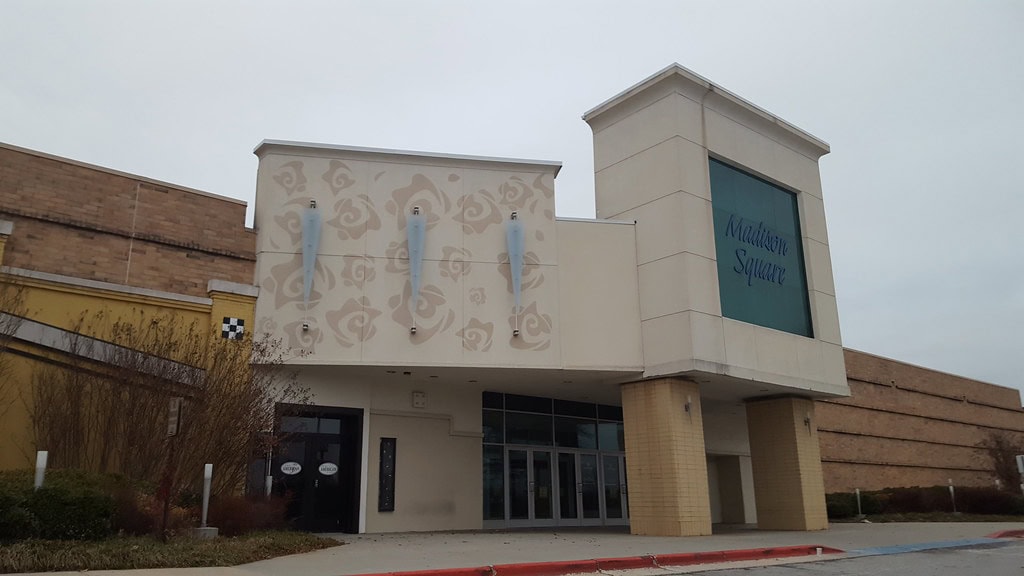
New Malls, Empty Storefronts, and Rising Fears at Madison Square
The trouble began outside the mall. In 2002, Parkway Place opened across town, offering shoppers a modern indoor mall.
Five years after that, Bridge Street Town Centre opened with outdoor shopping, lakes, walkways, and a variety of stores and restaurants designed to draw people in.
Madison Square, once the main attraction, started to feel like an outdated building from another era.
Big stores noticed what was happening. In 2014, Belk said it would close its Madison Square Mall store and open a bigger one at Bridge Street, spending $20 million.
The city promised $4 million to help with roads and basic needs at the new location. Huntsville's mayor, Tommy Battle, said that falling sales had made the Belk's Madison Square store lose money.
The mall that once brought in a fifth of the city's sales tax was now being left behind.
By 2012, 70 percent of Madison Square was empty. Sales tax money from the mall dropped from $6.5 million to $1.1 million, and property taxes fell by 75 percent.
The problems spread to nearby shopping centers along University Drive, where empty spaces and 'for lease' signs became common.
City officials started using the word blight, which means not just money problems but also a sense that the community has been let down.
As fewer people visited, stories about crime began to spread. In December 2012, a riot broke out over the release of new Nike Air Jordan sneakers, and police had to use pepper spray to break up the crowd.
In July 2014, a video went viral showing a Belk employee trying to stop a shoplifter in the parking lot. In September 2015, a woman was robbed at gunpoint in the same parking lot.
The mall was no longer a place to socialize; instead, people quietly wondered if it was still safe to be there.
Reality TV and the Last Liquidation
Even in decline, Madison Square Mall managed to attract a certain kind of national attention.
In December 2012, Food Network showed up to film the pilot for "Food Court Wars." Two local concepts, Kettle N' Spouts and Perkins & Sons, faced off under the tired fluorescents of the food court.
The winner, Kettle N' Spouts, earned a year's free rent valued at $100,000. It was reality TV's version of a stimulus package. Six months after the episode aired, the restaurant closed.
Behind the scenes, the property was being repositioned more decisively than any televised contest could suggest.
In late April 2015, CBL & Associates sold Madison Square Mall to The Grove Huntsville LLC for $5 million, a figure that would have seemed unthinkably low during its heyday.
That same month, RCP Companies secured an $8.2 million fixed-rate bridge loan from Thorofare Capital, setting the stage for something more ambitious than a cosmetic rehab.
By December 2015, RCP had unveiled a logo and a name for the successor: MidCity Huntsville, a mixed-use project that promised retail, restaurants, entertainment, offices, housing, a hotel, and a recreational park.
Not everyone was eager to see the old structure erased. In June 2016, TouchStar Cinemas, the operator of the on-site theater, launched a petition to spare its building from demolition.
More than 1,000 signatures materialized in a day, and Huntsville's director of urban development, Shane Davis, eventually assured the public that the theater would remain, with redevelopment plans reworked around it.
Liquidation sales began in the summer of 2016. The last mall-wide sale wrapped on January 8, 2017.
Sears, the original anchor that had followed the growth westward in the first place, announced on November 28, 2016, that it would close on January 29, 2017, but promised to return later to MidCity in a smaller format.
JCPenney, the other surviving original anchor, announced in December that it would close on January 28, exiting the Huntsville market altogether.
On January 29, 2017, Madison Square Mall closed its doors for good after 32 years.

From Dead Mall Shell to MidCity Blueprint
Demolition crews moved in quickly. On February 6, 2017, less than ten days after the last big store closed, the careful tearing down of Madison Square Mall began.
Over several months, the mall was taken apart piece by piece, finishing around June.
Parking lots became places to store equipment, and then turned into construction sites. For a while, TouchStar Cinemas stood alone in the middle of the debris, the last building left from what used to be there.
It stayed open until May 3, 2021, when it also closed and was later torn down. Its short extra time was just a pause before the end.
In the empty space, MidCity District began as a new kind of hope.
The first plan, a $350 million project in three parts, included 345,000 square feet of unique shops, 200,000 square feet of new office space, more than 900 homes, a 150-room small hotel, and several parks and public squares.
An outside estimate said that, over 15 years, the new area could bring in more than $250 million in tax money.
The numbers were no longer just for one mall but for a whole city area closely linked to Huntsville's growing tech and defense businesses.
While Madison Square Mall put almost everything in one building, MidCity wanted to spread things out into streets, blocks, and open spaces.
Being close to Cummings Research Park, which once brought in shoppers, is now used to attract companies looking for engineers and renters who expect to walk to dinner or a show after work, not just to a sea of parking.
The place that used to be busy on weekends is now being turned into a spot where people are meant to spend the whole week.
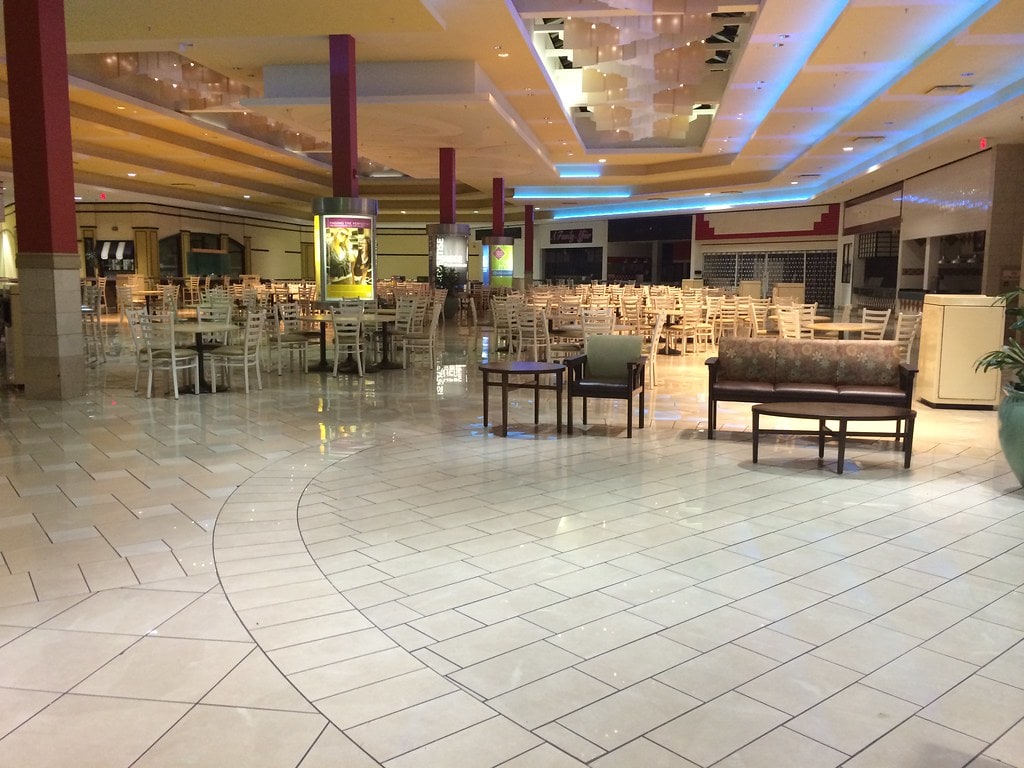
Basquiat, Kayaks, and MidCity's Half-Built Future
By 2024, the plans for that new life were no longer just ideas. In February, MidCity's developers made it clear that the next phase was about people living there, not just people visiting.
Two big apartment complexes, Anthem House and Wellory Living, were being built, together expected to bring more than 600 apartments, with some opening in 2025 and more later.
The old mall site, once a place you drove to, was slowly turning into a place where people would live and pay rent. The public spaces came next.
Construction on Apollo Park, a 20-acre green area between The Orion Amphitheater and Topgolf, stayed on schedule in 2024, promising lagoons for kayaking and canoeing, a beach area, trails, a walking bridge, and an outdoor fitness court with artwork by Jean-Michel Basquiat.
By December 5 of that year, city officials were celebrating the opening of the finished park. The city kept building.
In August 2024, Huntsville gave a contract to improve the street between Stax and Sanderson streets in MidCity, adding new road surfaces, parking spaces along the street, lighting, sidewalks, plants, and a small park called The Point.
In April 2025, Placemakr Huntsville at Anthem House opened, offering 330 fully furnished studios and one-bedroom units that could be used as either hotel rooms or apartments.
By late April, people could start booking, with a June 30 opening date, and by August 1, the Anthem House apartments were officially open.
A larger MidCity vision and what comes next
MidCity's goals had grown along the way.
The bigger plan, now estimated at about $2.2 billion, included about 1,865 homes, 925 hotel rooms, more than 600,000 square feet of shops and restaurants, and a network of parks and trails spread across what experts said was 140 acres.
The project is expected to be finished around 2032.
For Huntsville, the old Madison Square Mall is now less a forgotten place and more a long test of how a city can reuse its past without ignoring it.
The kayaks move where the food court used to be, the Basquiat mural looks over what was once a parking lot, and now the question is not what happened to the mall, but what else could happen on the land it left behind.


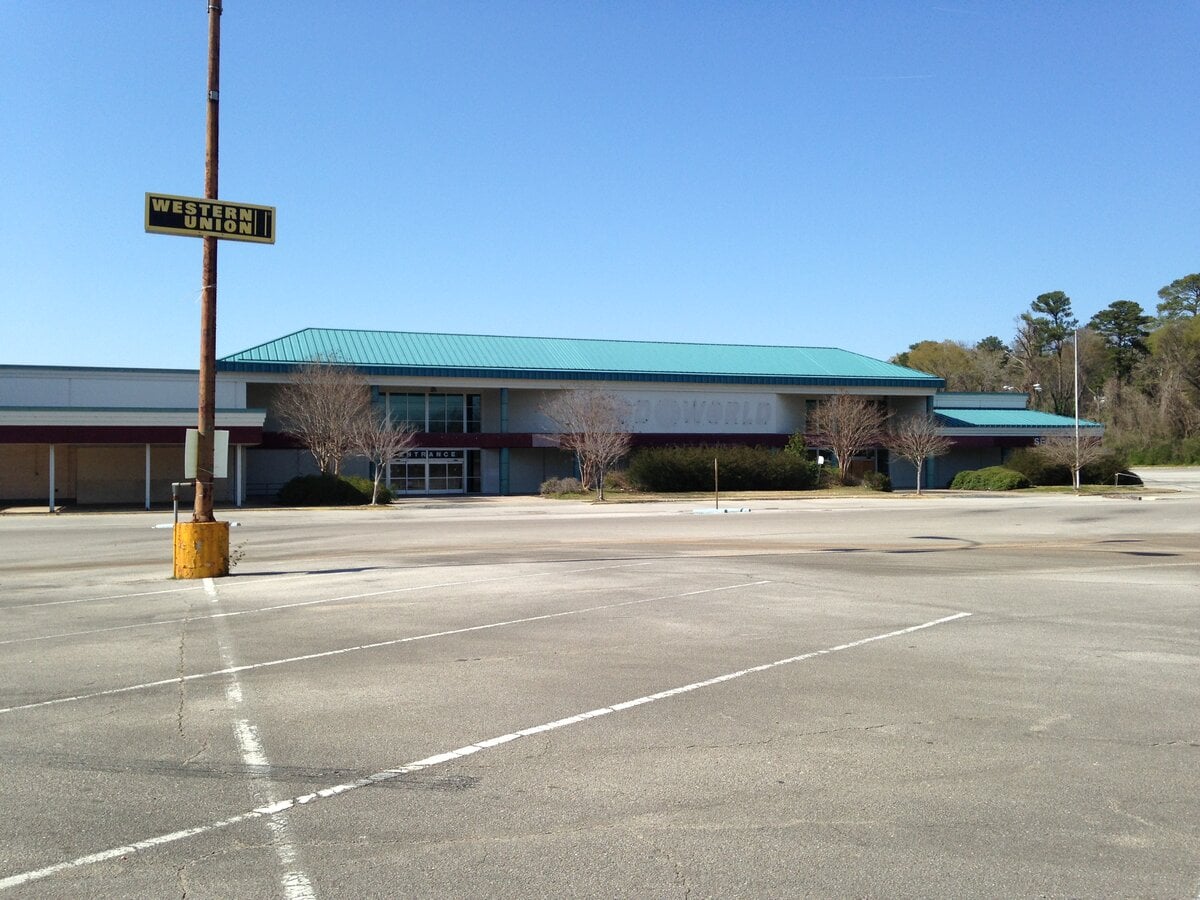
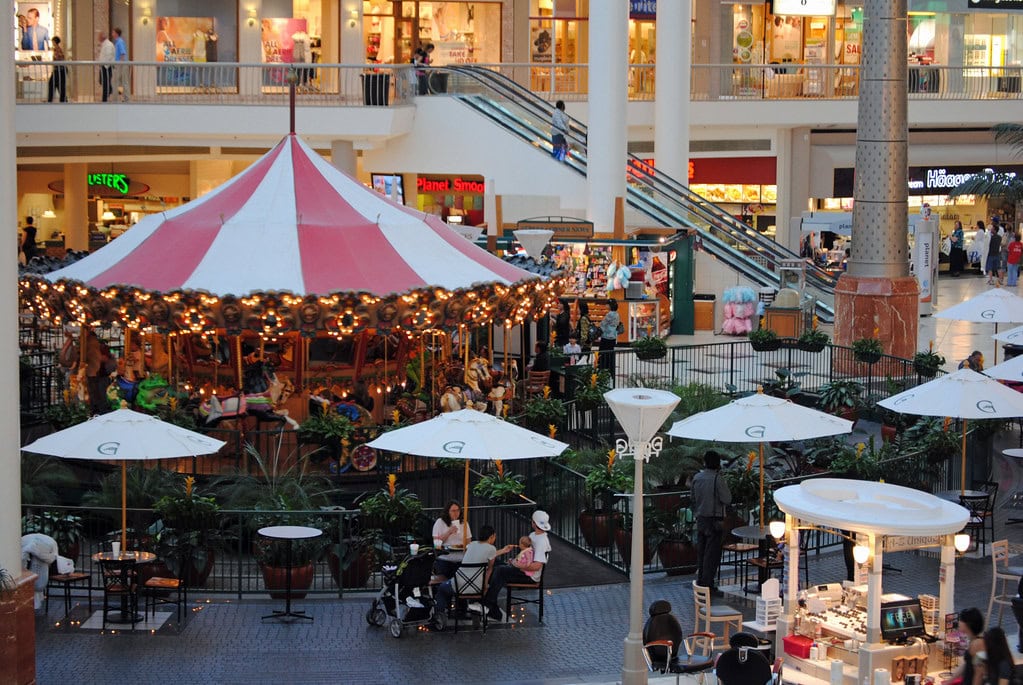
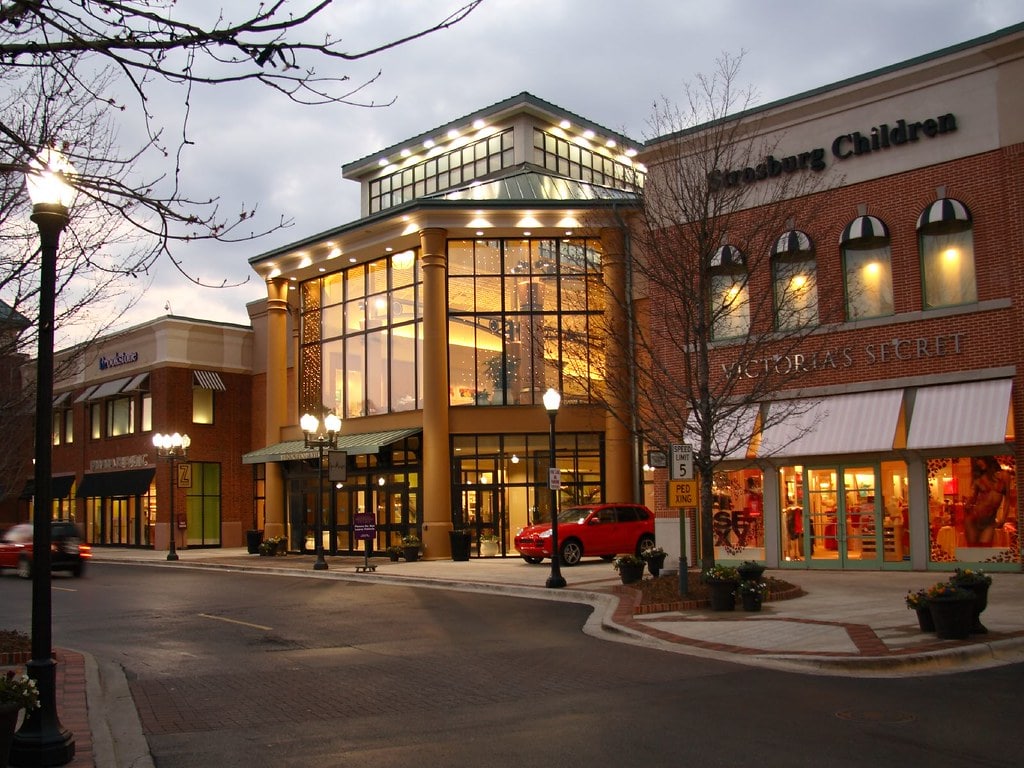
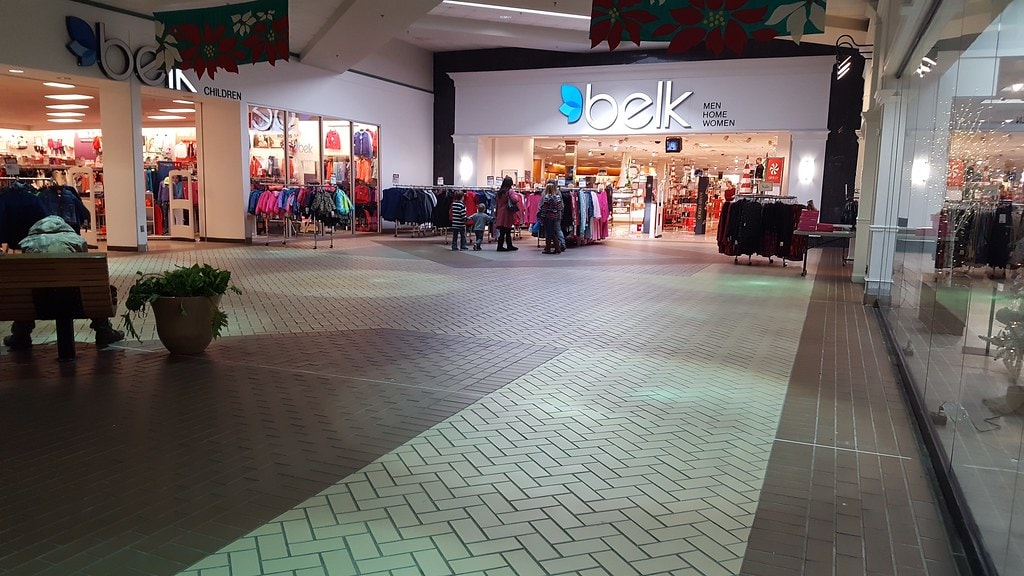



The oldest shopping mall left in Huntsville wasn’t Madison Square Mall. At the time of its opening in 1984 there were four malls in Huntsville that were 10 to 30 years older. The oldest shopping mall in Huntsville that was left at the time of Madison square Mall’s closing is the Huntsville Hospital Medical Mall. This Mall opened in 1963 as Dunnavant’s Mall. The mall had a sole anchor store which the shopping mall was named after along with 12 other interior retail spaces (18 after the renovations done in the early 70s). Dunnavant’s department store closed in the 80s and the mall along with it. Huntsville Hospital then bought Dunnavant’s Mall, turned it into the Med Mall. Because of this, it is the only remaining mall of the original four Huntsville shopping malls left.
Thank you for sharing such an informative and well-researched account of Huntsville's shopping mall history. Your knowledge of this subject is truly commendable.
I very much miss Madison Square Mall - it had decent places to shop for what you needed - JC Penneys - Sears - Dillards and all other retail stores - the location now is useless for the average person to shop at - it was not the lack of interest in these stores - it was the people who turned the area into a crime and unsafe place to shop - would very much rather have the stores in the old mall than anything that is located in the area now - wish we could bring the old mall back !!!!!!!!
Safety is a big concern, and, unfortunately, it led to the mall's decline. However, there's always room for redevelopment and community initiatives to turn things around.